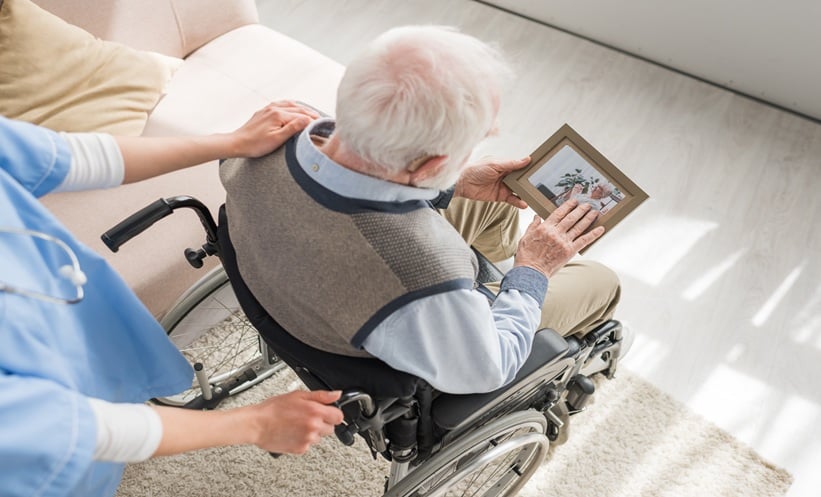THE VIBRANT city of San Diego, California, USA, welcomed the global neurology community at the American Academy of Neurology (AAN) 2025 Annual Meeting and proved to be an optimal meeting place for collaboration and innovation. With over 14,500 experts in neurological health from 110 countries and all 50 U.S. states, the AAN 2025 Annual Meeting boasted the best of this expertise. The gathering transcended borders to expand, build on, and strengthen knowledge in research and clinical practice.
The Presidential Plenary set the tone for an inspiring week, spotlighting not only scientific innovation, but also the profound human impact of neurology. Keynote speakers reflected on the evolving role of neurologists in a changing world; from harnessing cutting-edge neurotechnologies to addressing health disparities across populations. The plenary also honored pioneers whose contributions continue to shape the field, reminding us that behind every breakthrough lies a commitment to improving lives.
Over the course of the meeting, sessions continued to provide breadth on the major topics dominating the field. Breakthrough findings included neurodegenerative disease research, advances in neuroimaging and biomarkers, the expanding role of AI, and a renewed focus on neuroinflammatory conditions. In particular, health equity took center stage, as the community works to ensure neurology care reaches every patient in need.
This community demonstrated what it means to work as a multifaceted team. From mentorship programs and networking events to wellness activities and social gatherings, the attendees connected at every opportunity out of necessity to drive the field forward.
In our reflection of this year’s meeting, we have curated the 2025 Abstracts of Distinction, expert-led session summaries, and abstract reviews authored by the presenters themselves. These works represent the cutting edge of scientific discovery and the heart of the AAN mission to advance brain health for all.
Mouse Model Gives Hope for Anti-N-Methyl-D-Aspartate Receptor Encephalitis Treatment Development
ALTHOUGH many patients with anti-N-methyl-D-aspartate receptor encephalitis (NMDARe) improve with immunotherapy, current animal models have failed to replicate the full complexity and duration of the disease, limiting progress in the development of new therapies. Researchers at the AAN 2025 Annual Meeting presented an abstract describing the development of a novel mouse model that more accurately captures the pathophysiological and clinical trajectory of NMDARe, creating an opportunity for comprehensive therapeutic assessment and further research.1
In the model, 8-week old female C57BL/6J mice were immunized with a GluN1356-385 peptide combined with AddaVax (adjuvant that favors B cell autoimmunity) and pertussis toxin, while control mice received saline. Mice were then monitored for a range of behavioral, immunological, and neurological changes. Treatment arms included anti-CD20 therapy, a positive allosteric modulator of NMDAR (NMDAR-PAM, SGE-301), or a combination of both. The researchers used a range of techniques to assess factors including GluN1-antibody synthesis and microglial activation. A panel of behavioral tests and brain-implanted electrodes were used to asses changes in memory and clinical/subclinical seizures, respectively.
Results showed that mice receiving the GluN1356-385 peptide developed both serum and cerebrospinal fluid NMDAR antibodies, with epitope spreading and a reduction in synaptic NMDAR clusters and hippocampal plasticity seen. The researchers also observed brain-bound antibodies, B cell and plasma cell infiltration, microglial activation, and NMDAR/IgG complexes within microglial endosomes. Cultured deep cervical lymph nodes showed NMDAR-antibody synthesis. Clinically, these mice displayed psychosis-like behavior, memory deficits, abnormal movements, and heightened seizure susceptibility. Notably, treatment with anti-CD20, NMDAR-PAM, or both, reversed most behavioral and neurobiological abnormalities. Furthermore, B cell repopulation led to a resurgence of clinical-neurobiological alterations, which were mitigated by NMDAR-PAM.
The study presents a comprehensive and clinically relevant model of NMDARe that not only elucidates the immunopathogenesis of the disease but also facilitates the testing of novel treatments. Of particular clinical interest is the demonstrated efficacy of NMDAR-PAM in both symptom reversal and disease suppression following B cell repopulation. This model may inform future therapeutic strategies, and supports more refined immunological approaches in managing NMDARe in clinical practice.
New Insights into the Role of APOE e4 in Dementia with Lewy Bodies
NEW research presented at the AAN 2025 Annual Meeting has revealed that the APOE e4 allele exacerbates Lewy body pathology independently of Alzheimer’s disease (AD)co-pathology, and differentially influences core clinical features in dementia with Lewy bodies (DLB).2
The APOE e4 allele is a well-established genetic risk factor for AD, but its role in DLB remains debated. While AD neuropathology in DLB correlates with accelerated cognitive decline, the independent contribution of APOE e4 to Lewy body pathology and its impact on hallmark symptoms such as fluctuating cognition, visual hallucinations, rapid eye movement sleep behaviour disorder (RBD), and parkinsonism have been unclear. This study aimed to resolve these uncertainties using a large, multi-group cohort to dissect genetic and neuropathological interactions.
The analysis included 38,414 participants: 1,170 with DLB, 1,032 with Parkinson’s disease (PD), 17,416 with AD, and 18,796 controls. Logistic regression models assessed associations between APOE genotypes, Lewy body pathology severity, and clinical features. Results demonstrated that APOE e4 correlated with more severe Lewy body pathology even in cases with minimal AD co-pathology (odds ratio [OR]: 1.39; 95% CI: 1.01–1.94; p=0.049), suggesting an independent role in α-synucleinopathy progression. Clinically, two-thirds of participants with DLB exhibited fluctuating cognition, visual hallucinations, or RBD, while 86.9% developed parkinsonism. Intriguingly, higher APOE genetic risk scores reduced the likelihood of fluctuating cognition (OR: 0.72; 95% CI: 0.53–0.97; p=0.031), RBD, and parkinsonism but increased visual hallucinations (OR: 1.16; 95% CI: 1.12–1.20; p<0.001), indicating allele-specific modulation of symptom profiles.
These findings demonstrate that the link between APOE e4 and Lewy body pathology is independent of the severity of AD pathology, and exerts divergent effects on clinical phenotypes. For clinical practice, this highlights the need for APOE genotyping in patients with DLB to predict pathological burden and symptom trajectories, particularly visual hallucinations, which may require tailored interventions.
National Survey Shows Missed Opportunities in Amyotrophic Lateral Sclerosis Care
AN ABSTRACT presented at the AAN 2025 Annual Meeting has highlighted both the strengths and limitations in the provision of palliative care (PC) for individuals diagnosed with amyotrophic lateral sclerosis (ALS), based on a nationwide survey of interdisciplinary ALS and PC clinicians.3
The study, designed to inform future educational initiatives, program development, and quality improvement strategies, revealed a consistent recognition of the benefits of PC in enhancing symptom management and overall well-being for patients and their care partners. However, its implementation remains suboptimal.
Survey responses were collected from 118 ALS clinicians and 145 PC clinicians representing 28 and 26 states, respectively. Among ALS clinicians, including physicians, rehabilitation therapists, and nurses, only approximately half reported high confidence in effectively managing pain (56.6%) and mood symptoms (53.1%). Notably fewer clinicians reported proficiency in addressing spiritual or existential distress (31.0%) and family or care partner needs (43.4%).
While ALS clinicians generally expressed satisfaction with the quality of care delivered by PC teams (with satisfaction rates ranging from 77.0–97.6% across different care aspects), many PC clinicians reported lower confidence in managing ALS-specific concerns. For example, 78.3% expressed discomfort with managing assistive equipment, and 56.6% were uncertain about counseling patients on the discontinuation of ALS-specific pharmacologic therapies.
Despite these identified challenges, there was strong consensus regarding the value of integrated PC: 76.1% of patients with ALS and 79.2% of PC clinicians supported the inclusion of PC for all individuals with ALS as part of standard, comprehensive care. Additionally, most ALS clinicians rated the quality of outpatient PC as excellent (53.7%) or good (38.8%).
These findings highlight critical areas for targeted training and interprofessional collaboration to optimize the delivery of PC in ALS, and support future efforts in system-level improvement and advocacy.
Is Ang2 a Biomarker for Microvascular Injury Following Traumatic Brain Injury?
AS AN antagonist of the TIE2 receptor, Ang2 is involved in vascular injury and repair processes, which are often disrupted following traumatic brain injury (TBI). Given the potential for Ang2 to serve as a biomarker of microvascular injury, an abstract presented at the AAN 2025 Annual Meeting aimed to assess the relationship between Ang2 plasma levels, TBI severity, CT findings, and the temporal evolution of Ang2 levels in the weeks following TBI.4
The key finding was that Ang2 levels were elevated in TBI cases and correlated with injury severity, with higher levels persisting in more severely injured patients for up to 2 weeks.
The study was part of the TRACK-TBI cohort and included 362 adults with TBI, 89 individuals with orthopedic injuries (OI) as controls, and 64 healthy controls (HC). Plasma samples were collected at three time points: 1 day (D1), 2 weeks (W2), and 6 months (M6) post-injury. Ang2 levels were measured using the Meso Scale Discovery (MSD) R-PLEX assay, and additional biomarkers were assessed on the MSD Neurology Panel S-Plex. This allowed for a comprehensive analysis of the biomarkers associated with TBI.
The mean age of the participants with TBI was 39.8 years. Among them, 174 participants (48%) had a Glasgow Coma Scale (GCS) score of 13–15, while 188 participants (52%) had a GCS score of 3–12. On D1, participants in the TBI group had significantly higher Ang2 levels (2.4 ng/mL [1.8–3.9]) compared to healthy controls (1.7 ng/mL [1.3–2.1]; p<0.001) and OI participants (2.2 ng/mL [1.6–2.7]; p=0.008). Ang2 levels remained elevated at W2 in patients with GCS 3–12 (3.3 ng/mL [2.3–5.1]), but returned to normal by M6. In contrast, Ang2 levels in patients with GCS 13–15 had returned to baseline by W2. Furthermore, higher Ang2 levels on D1 were associated with abnormal CT findings, with a median of 2.9 ng/mL (2.0–4.5) in cases with abnormal CT compared to 2.0 ng/mL (1.5–2.5) in CT-negative cases (p<0.0001).
In conclusion, the study demonstrated that Ang2 is an important biomarker for TBI, particularly for identifying microvascular injury. Elevated Ang2 levels in the first 2 weeks post-injury, especially in severe cases, suggest its potential role in monitoring TBI severity and progression. However, the study is limited by its observational design and the absence of long-term follow-up beyond 6 months, and further research is needed to validate Ang2 as a clinical tool for TBI management. Nonetheless, these findings could inform future clinical practice by offering a promising biomarker for assessing the severity and recovery of patients with TBI.
Mapping the Genetics of the Hypothalamus: Implications for Neuropsychiatric Disease
THE FIRST comprehensive genetic map of the human hypothalamus, with data on how subregions link to various neuropsychiatric traits and disorders, was presented at the AAN 2025 Annual Meeting.5 This study identifies key genetic loci influencing hypothalamic anatomy and links them to neuropsychiatric traits, offering new avenues for understanding brain-behaviour relationships.
The hypothalamus is a critical brain region governing neurological and metabolic functions, yet its genetic underpinnings remain poorly characterized. Previous studies have been limited by small sample sizes and manual segmentation methods, constraining insights into its genetic associations with neuropsychiatric conditions. This study aimed to address this gap by systematically investigating the genetic architecture of the hypothalamus and its association with neuropsychiatric conditions.
Using advanced imaging and genomic techniques, multivariate genome-wide association studies were conducted on hypothalamic structural data. Automated segmentation of the hypothalamus and its subregions enabled large-scale analysis. Functional annotation, gene mapping, and causal inference methods were applied to prioritize relevant pathways.
Twenty-three genomic loci were significantly associated with hypothalamic structure, with enrichment for genes involved in intracellular trafficking and steroid-related metabolism. Genetic correlations linked hypothalamic anatomy to neuropsychiatric traits such as chronotype, risk-taking behaviour, cognition, and autonomic regulation. Shared genetic architecture was observed between the hypothalamus and schizophrenia, Parkinson’s disease, and stroke. The strongest genetic signal, located near the ADAMTS8 gene, was replicated in three independent datasets (N=1,685–4,321), and demonstrated a causal relationship with hypothalamic volume, suggesting a role in neurodevelopmental processes.
These findings advance understanding of the hypothalamus’s genetic complexity and its influence on neuropsychiatric health. Integrating hypothalamic genetic profiles into clinical frameworks may enhance precision medicine approaches in psychiatry and neurology.
How Four Women Shaped EEG History
THE HISTORY of EEG is often told through the achievements of prominent male scientists including W. Grey Walter, Hallowell Davis, and Alexander Forbes; however, behind the evolution of EEG as a clinical tool lies a cohort of pioneering women whose vital contributions remain largely under-recognized. A recent study presented at the AAN 2025 Annual Meeting aimed to spotlight four of these trailblazers: Erna L. Gibbs, Pauline A. Davis, Ellen Grass, and Mary A.B. Brazier.6
Despite their foundational work, few historical records or dedicated articles acknowledge their influence. For instance, only one article focusing solely on Grass’s contributions was found, while none were retrieved for Gibbs, Davis, or Brazier. Nevertheless, their work shaped the field in critical ways.
Gibbs and Davis were instrumental in the first recordings of the characteristic 3 Hz spike-and-wave patterns associated with absence epilepsy. Gibbs also authored the first EEG manual, cataloguing over 10,000 traces, and conducted pioneering work on seizure localization to support epilepsy surgery. Davis made a breakthrough by reporting the first evoked potentials in response to auditory stimuli, an innovation that would prove essential in clinical and research contexts.
Brazier was a pioneer of computational approaches in EEG, introducing correlation and auto-correlation analyses to interpret brain signals. Her leadership roles, including presidency of the International Federation of Clinical Neurophysiology, further highlight her impact. Grass contributed significantly to the technical advancement of EEG through her role in founding The Grass Instruments Company.
These women not only propelled EEG research forward but also laid foundational stones for modern neurophysiology. Their legacy, though monumental, remains undervalued. This study underscores the need to reframe historical narratives to rightly honor the women whose work helped define an entire scientific field.
Early-Onset Parkinson Disease Autonomic Impairment Linked to Increased Risk of Mortality
EXPERIENCING autonomic dysfunction is common in patients with Parkinson’s disease (PD) and has also been associated with increased cardiovascular mortality. Authors from Mayo Clinic, Rochester, Minnesota, USA, presented new findings on the frequency and time of onset of autonomic dysfunction relative to PD onset in early-onset parkinson disease (EOPD), and explored its association with mortality.7 The study was presented at the AAN 2025 Annual Meeting as part of the 2025 Abstracts of Distinction.
The team collated information on 829 incident PD cases with EOPD (motor symptom onset before 50 years of age), and 829 controls evaluated at Mayo Clinic between 1990–2022. The median age at PD onset was 42 years (interquartile range: 37–46). Medical records confirmed clinical diagnosis, and assessment of presence and time of onset of autonomic symptoms, including constipation, bladder urgency, sweat dysfunction, orthostatic hypotension, and erectile dysfunction, relative to PD motor onset. Sex- and age-matched controls were also included for each patient.
Of the patients with EOPD, 63.4% had autonomic symptoms, compared to 27.0% of unaffected controls, and these preceded motor symptoms in 91.4% of EOPD cases. The patients with EOPD experienced constipation (47%), bladder urgency (27.4%), orthostatic hypotension (19.3%), and sweat dysfunction (15.4%). Among male patients with EOPD, 36.8% had erectile dysfunction. In EOPD, the presence of any symptoms of autonomic impairment was associated with a 3.06 increased mortality risk. For each additional such reported symptom, the relative mortality risk increased by 63% (p<0.001). Patients with constipation or orthostatic hypotension had a 2.84 and 2.16 fold higher mortality risk, respectively, compared to patients without these symptoms.
Autonomic impairment affects 63.4% of patients with EOPD and is associated with a three-fold higher mortality risk. The mortality risk increases with each additional autonomic failure symptom reported. In this disease cohort, autonomic symptoms were most commonly postdromal features, contrasting with prodromal autonomic impairment seen in late-onset PD.
RAG-17 siRNA Therapy Shows Promise in Amyotrophic Lateral Sclerosis Trial
A NEW investigational therapy may offer hope for patients with SOD1-associated amyotrophic lateral sclerosis (ALS). RAG-17, an siRNA therapy designed to silence the SOD1 gene, was evaluated in a first-in-human trial conducted in China. The treatment uses a smart chemistry aided delivery (SCAD) system to enhance delivery to the central nervous system via intrathecal injection, and the study was presented at the AAN 2025 Annual Meeting as part of the 2025 Abstracts of Distinction.8
In the small open-label dose-escalation study, six participants with SOD1-ALS received between 6 and 7 doses of RAG-17 over 240 days, with doses escalating up to 180 mg. The therapy was well tolerated, with no serious adverse events or dose-limiting toxicities. Side effects such as muscle tremors and headaches were reported in a few participants.
Biological markers showed promising changes: cerebrospinal fluid levels of the SOD1 protein dropped by more than 50% in five patients, and plasma neurofilament light chain, a marker of neuronal injury, also declined. Importantly, the average rate of ALS progression, measured by the ALS Functional Rating Scale-Revised (ALSFRS-R), was slower than expected, with participants losing only 0.29 points per month. Respiratory function (forced vital capacity) remained stable or improved in most individuals.
Although the study’s size limits broad conclusions, these preliminary results suggest that RAG-17 is safe and biologically active, meriting further clinical investigation as a disease-modifying treatment for ALS.





